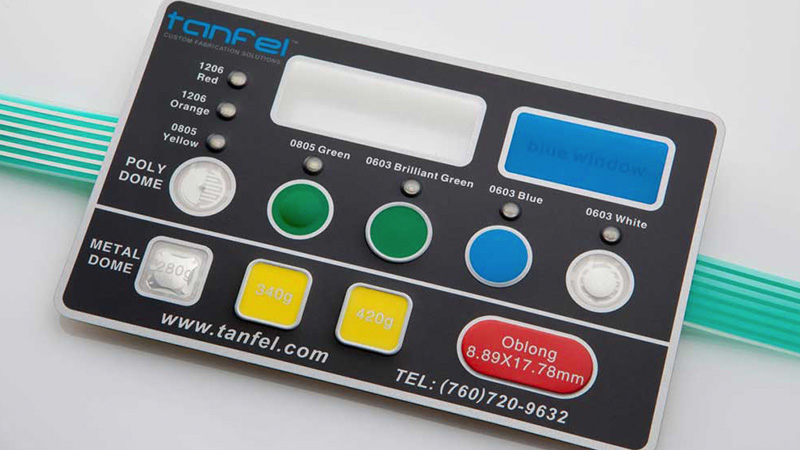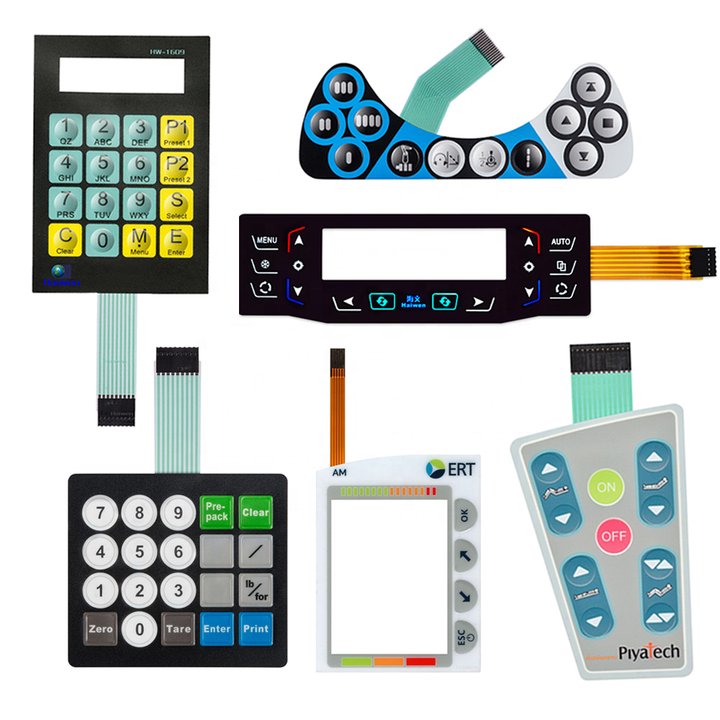A Comprehensive Guide to Membrane Switches for Product Designers
A Comprehensive Guide to Membrane Switches for Product Designers
Blog Article
Discover Just How Membrane Switches Function and Their Duty in Modern Electronics
Membrane Switches stand for an advanced combination of modern technology and layout within the realm of modern-day electronic devices, offering as essential user interfaces in various gadgets. Recognizing the ins and outs of Membrane switch performance and their more comprehensive implications in enhancing individual experience invites more exploration into their design, benefits, and the ingenious developments shaping their future in technology.
What Are Membrane Buttons?

Membrane buttons are differentiated by their toughness and resistance to environmental factors, such as dust, wetness, and extreme temperatures. They can be personalized with various graphics, shades, and responsive responses choices, boosting user experience while keeping aesthetic appeal - membrane switches. The incorporation of printed circuits enables for smooth integration into gadgets, enhancing general capability.
The convenience of Membrane switches is evident in their capacity to support both complicated and simple control functions. They can incorporate functions such as LED signs and touch-sensitive technology, dealing with specific individual demands. As technology proceeds to evolve, Membrane Switches remain crucial for enabling reliable and intuitive individual interfaces, therefore playing an essential function in the innovation of modern electronic gadgets.
Parts of Membrane Switches
Membrane switches are composed of several essential elements that collaborate to create a practical and dependable user interface. The main elements include the graphic overlay, glue layer, spacer layer, and conductive traces.
The visuals overlay acts as the user interface, commonly published on a versatile substrate such as polyester or polycarbonate. This layer not only provides visual appeal but additionally includes tactile feedback, aesthetic cues, and safety features. Beneath the visuals overlay exists the adhesive layer, which safeguards the switch to the device and ensures resilience against environmental anxieties.
The spacer layer is critical for preserving the necessary void in between the visuals overlay and the circuit layer. This gap permits for the activation of the button when stress is used. The conductive traces, usually made from silver or carbon, form the electric paths that finish the circuit when the button is involved.
Additionally, a backing layer may be consisted of for structural assistance and insulation. These components work together seamlessly, making sure that Membrane switches are both resilient and user-friendly, making them important in different modern digital applications.
Exactly How Membrane Switches Work
How do Membrane Switches feature successfully within digital devices? Membrane Switches run on the principles of pressure-sensitive innovation, utilizing a split construction that consists of visuals overlays, sticky layers, and conductive aspects.
The design of Membrane buttons is critical for their efficient procedure (membrane switches). The layers are meticulously crafted to supply responsive comments, durability, and resistance to environmental aspects such as dampness and dirt. The incorporation of domes-- little, raised locations within the button-- enhances responsive feedback, supplying customers with an obvious click feeling upon activation
Moreover, Membrane switches can be customized in terms of dimension, shape, and graphics, making them suitable for various applications. They are frequently made use of in control panels, clinical tools, and customer electronics because of their streamlined layout and dependability. Overall, the effective performance of Membrane switches is critical in improving customer visit this web-site interaction and guaranteeing seamless procedure in contemporary electronic gadgets.

Applications in Modern Instruments
Using their distinct style and capability, Membrane switches have actually come to be indispensable elements in a wide variety of modern digital gadgets. These functional interfaces are utilized in customer electronic devices, industrial tools, medical tools, and auto controls, giving seamless customer communication.
In consumer electronic devices, Membrane buttons are typically discovered in home appliances like microwaves, washing machines, and various other house tools, where they allow user-friendly control with a streamlined profile. Their inconspicuous design helps with integration into portable gadgets, enhancing aesthetic appeal without jeopardizing Clicking Here performance.
In commercial applications, Membrane Switches act as control panels for machinery, using durability and resistance to harsh environments. Their capability to withstand moisture and impurities makes them perfect for usage in manufacturing and handling sectors.
Clinical devices additionally profit from Membrane buttons, which are made to be simple to clean and keep, making certain hygiene in scientific settings. They are frequently made use of in diagnostic tools, person monitoring systems, and mobile clinical tools, where reliability is critical.
Advantages of Membrane Buttons
One of the essential advantages of Membrane buttons is their versatility, which enables them to be tailored for a range of applications throughout multiple markets. These buttons can be made in various shapes and dimensions, suiting distinct item demands while offering seamless integration basics right into devices. Their thin account enables a compact and streamlined layout, often boosting the aesthetic charm of electronic products.
One more significant benefit is their sturdiness - membrane switches. Membrane switches are commonly resistant to dirt, moisture, and chemicals, making them perfect for severe environments. This strength extends their life expectancy compared to standard mechanical switches, minimizing the requirement for frequent replacements
Furthermore, Membrane Switches deal cost-effectiveness. The manufacturing procedure involves printing technologies that minimize manufacturing prices, especially for huge runs. This cost, incorporated with reduced upkeep requirements, makes them an eye-catching choice for suppliers.

Final Thought
In final thought, Membrane Switches stand for a significant advancement in customer interface technology within modern-day electronics. As the need for user-friendly and resistant user interfaces continues to grow, the duty of Membrane buttons in forming user experience will unquestionably expand.
Membrane Switches stand for an advanced assimilation of innovation and design within the realm of modern-day electronic devices, serving as crucial interfaces in many devices.In the world of contemporary electronics, Membrane Switches serve as essential components that help with user communication with devices. As modern technology continues to develop, Membrane Switches stay important for allowing instinctive and efficient customer interfaces, consequently playing a critical duty in the innovation of modern-day electronic devices.
How do Membrane Switches feature successfully within electronic gadgets? Overall, the efficient functioning of Membrane switches is essential in improving individual communication and guaranteeing seamless operation in modern-day digital gadgets.
Report this page